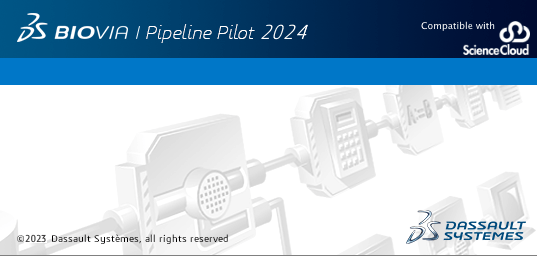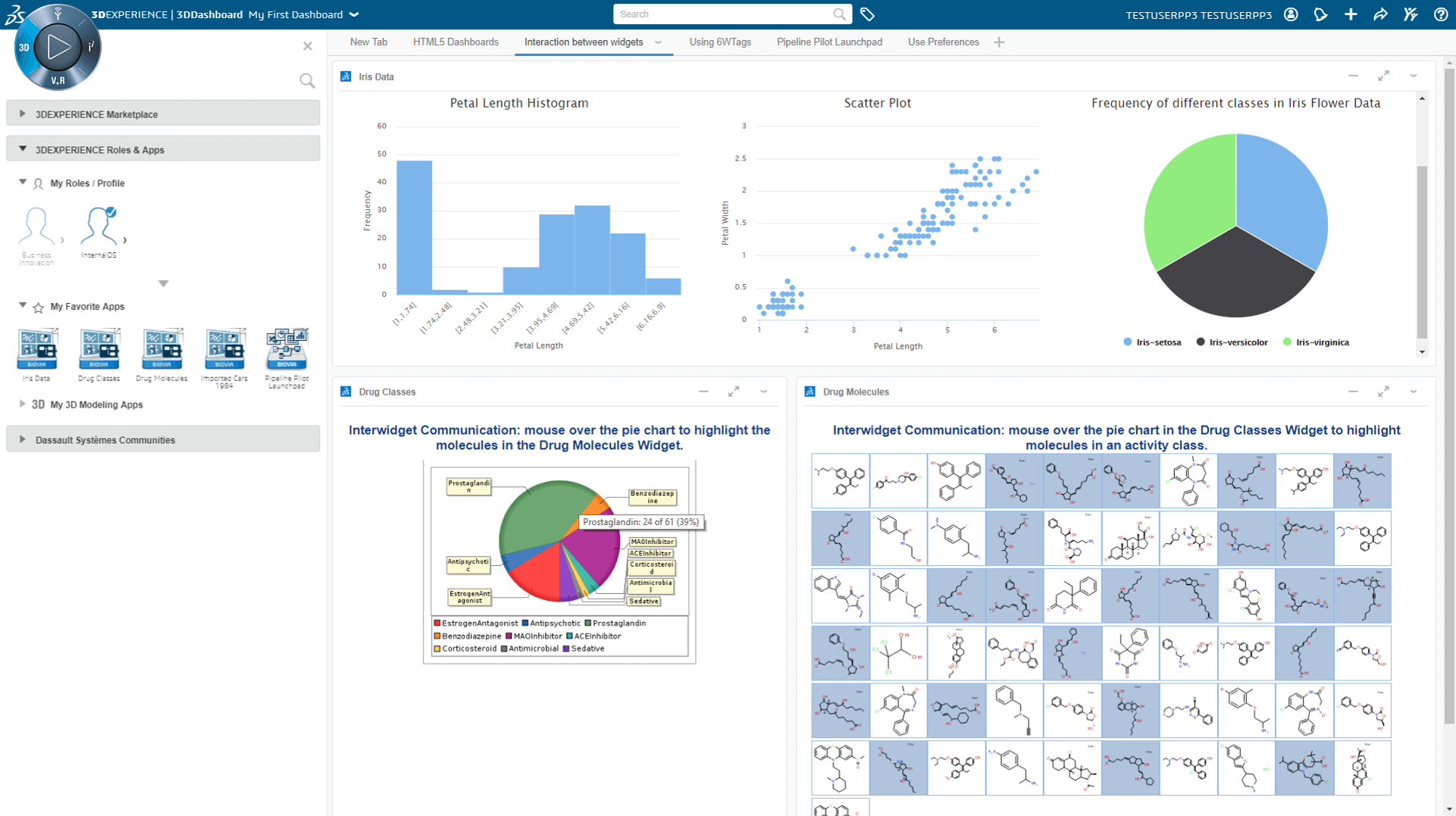- Témaindító
- #1
- Csatlakozás
- 2023.05.28.
- Üzenetek
- 24,502
- Reakció pontszám
- 542
- Díjak
- 6
- Kor
- 33

File size: 8.22 GB
Leveraging BIOVIA Pipeline Pilot and its Collections, users author data pipelines, or protocols in Pipeline Pilot, to deliver integrated, data-driven solutions, and potentially combine them with other BIOVIA applications to augment out-of-the-box capabilities.
Operationalize Data-driven and AI-based Workflows
Data has become ubiquitous. However, many scientific and engineering-based organizations still struggle to effectively utilize the data at their disposal. Teams use different tools and processes to access data, clean it, model it, and deliver results, but these results often lack the domain depth needed to drive innovation. This disjointed, and often too generic approach, to analyze scientific and engineering data and deliver insights lowers trust in results, obstructs progress, and stifles collaboration. To fully benefit from the potential data science offers, organizations need an end-to-end approach to leverage their data across the science and engineering enterprise.
Key Benefits
-Democratize Data - Maximize the value of AI and machine learning for everyone.
-Capitalize Scientific Knowledge and Know-How - Capture best practices standard practices as distributable, modular, shareable protocols.
-Deploy Data-driven R&D Operations - Help your teams work smarter, not harder.
-Support End-to-End Data Science Workflows - Deploy services where they are needed, when they are needed. All in a single workflow.
Purpose-built Solutions for Science and Engineering
Scientists and engineers face different challenges. BIOVIA Pipeline Pilot, and specifically its Collections, offer vertical and horizontal domain-specific capabilities out-of-the-box, supporting users to solve their challenges from cheminformatics to sequence analysis, from image analytics to document and text searching, from lab informatics to machine learning and analytics. Explore our Collections below.
Simplify Your Data Science Workflow
Data comes in all shapes and sizes, yet unlocking actionable insight efficiently requires deep knowledge of data science techniques. BIOVIA Pipeline Pilot Machine Learning and Analytics Collection provides a comprehensive set of machine learning and data modeling capabilities to streamline your data science initiatives.
Analyze data, train and retrain models, and deploy your automated solution to useful enterprise applications.
Developing machine learning solutions often requires complex software architectures and deep statistical knowledge. With BIOVIA Pipeline Pilot Analytics and Machine Learning Collection, developers and end users alike can incorporate the latest machine learning techniques to their workflows with just a few clicks. No coding required.
Key capabilities
-Merge, join, characterize, and clean your data sets
-Apply any of 15+ machine learning (ML) methods to your scientific and engineering data
-Use R-based ML methods such as support vector machines, neural networks, and XGBoost without writing R scripts
-Use Python ML libraries including scikit-learn and TensorFlow
-Rapidly apply statistical analyses
-Use regression and classification model evaluation viewers to assess and compare model test set performance
-Build fast, scalable Bayesian classification models
-Use the GFA method's genetic algorithm for variable selection and building regression ensemble models
-Build accurate, easy-to-use RP Forest regression and classification models
-Curate model performance
-Deploy model applicability domain (MAD) methods and cross-validation
-Employ the ML framework for cross-validation, hyperparameter tuning, and variable importance assessment for any type of model
-Work flexibly
-Support for 3rd party statistic platforms and tools such as Jupyter Notebook, R, JMP and SAS
-Read in discipline-specific data
-Purpose-built to support various numerical, chemical, biological, textual, and image data types
-Use built-in applicability domain measures and error models to assess sample-specific prediction confidence
-Optimize predictions
-Train multiple trial models in parallel to identify top performers or combine multiple models into a single ensemble model
-Simplify multi-objective optimization
-Employ methods such as Pareto optimization to multi-objective optimization problems
-Visualize results in workflow
-Generate interactive reports with ROC plots, enrichment plots and other visualization techniques
-Perform exploratory analysis, including PCA, clustering, and multi-dimensional data visualization
System Requirements
OS:Windows 10/Windows Server 2019/Windows Server 2016
CPU:Intel-compatible x86_64 architecture
RAM:4 GB per core
Space:70 to 80 GB
Screen :

What's New
official site does not provide any info about changes in this version.
HOMEPAGE
Code:
⚠
A kód megtekintéséhez jelentkezz be.
Please log in to view the code.
Code:
⚠
A kód megtekintéséhez jelentkezz be.
Please log in to view the code.
Code:
⚠
A kód megtekintéséhez jelentkezz be.
Please log in to view the code.
